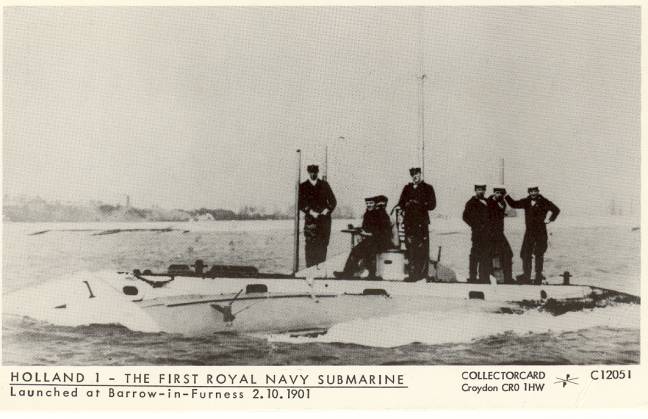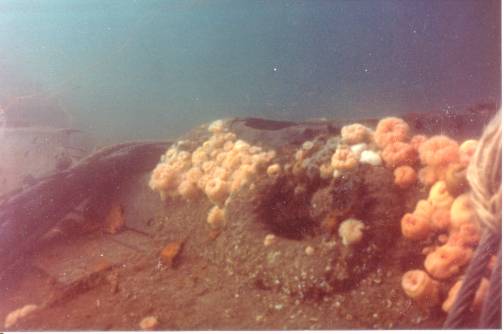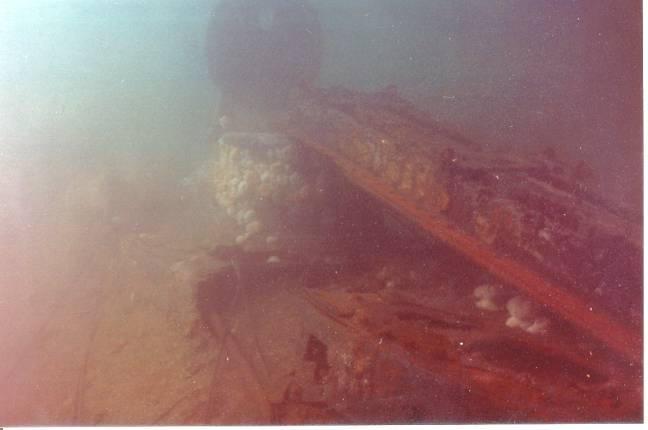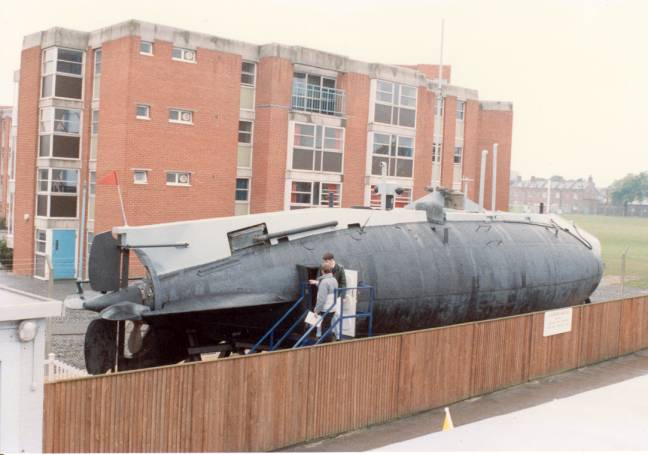Over the years many had struggled in vain to make the submarine into an effective weapon.

In the end it fell to John Fredrick Holland, an Irish man living in America, to put all the elements of the modern submarine into one hull and make it work. His preferred method of propulsion was the internal combustion engine combined with battery powered electric engines. After several prototypes he developed the Holland Four for the United States Navy and armed it with a White head torpedoed. Although he was not the first to do this, the reliability of his submarine combined with his engineering genius forged the two into the start of a deadly combination. The submarine as an effective weapon had finally arrived.

In1901 the Royal Navy had ordered five Holland submarines. In April 1902 the very first, Holland one, was taken out for its maiden voyage under the command of Lt.Arnold Foster. Although quickly superseded by the A class of submarines, the Holland’s acquitted themselves well and gave years of satisfactory service. In 1913 Holland 1 was sold for scrap, and whilst on tow past the Eddystone she foundered and sank thus slipping from peoples memories.

However in 1981 Royal Navy divers stumbled across the wreck out near the Eddystone Reef and the Admiralty decided to salvage the submarine and place in the Submarine Museum at Gosport. Once the Holland had been lifted from the Reef she was taken to the sheltered waters just off Drake’s Island in Plymouth Sound, where she lay over night waiting for the high tides that would enable her to be safely carried through the Hamoaze and up the River Tamar to the waiting Dockyard.

Once inside the dry dock the Holland was lowered onto a specially made cradle. Teams of divers were sent down continually to monitor her progress, whilst the engineers waited anxiously up top. They had prepared the cradle from the original builders drawings of the Holland, and if they had got it wrong the Submarine could fall off the cradle once all the water was pumped out of the dock. At last every body was satisfied that all was well, and as the last of the water was pumped out of the dry dock, crowds of people started to gather to see the Royal Navy’s first operational submarine emerge. For a submarine that had not seen the light of day for over seventy years the Holland looked in remarkable condition.

Even though her hull had one or two holes, there seemed nothing structurally wrong with her, and the engineers put this down to the fact that she had been lying in nearly two hundred feet of water and so had been out of the reach of the damaging turbulence that storms can so often inflict. Once the engineers were quite certain she was secure they had to remove the thin coating of rust that had so far protected the hull from serious corrosion. As the water jets blasted off the rust the hull started to come shiny clean and gave a hint of what the Holland must have looked like when she was first built. The entire hull had to be scrupulously clean to allow the Fertan preserving chemical to be sprayed on to stop the hull rusting any further and for the metal to be stabalized.

This was very important, as further treatment would have to wait until she was rehoused at Gosport. Because the hull was so unwieldy it was cut into three and loaded onto separate transporters for her journey at Gosport. Here she was transformed into a superb exhibit. You could go inside and see everything. It was very impressive. Unfortunately it did not last. Something went wrong after a few years and the Holland started to corrode. Nothing the Museum could do seemed to stop it so in desperation the Submarine was placed in a sealed tank until a remedy could be found. To date no satisfactory remedy has been found and the Holland remains entombed in her own iron casket.
Good News:
The problems with the Holland seem to have been solved, and she has now been restored to her former glory and is now once more on view at the Submarine Museum in Gosport.

James Easton says
I’m having a uneventful search for video footage of the salvage of Holland 1 by RMAS Pintail. would you know of any sources of this please?